- +30 211 7107433
- info@amoratistravel.com
- 6 Sardeon Str, Nea Smyrni, 17121 Greece
Arrival to Thessaloniki Airport
Transfer to the hotel in the centre of Thessaloniki and check-in
Dinner and overnight in Thessaloniki
Breakfast
Visit the site of Philippi and Baptistery of Lydia
Visit the Christian Basilicas, St.Paul's prison and the Ancient theatre
Drive to Kavala port (Neapolis), a picturesque port with the Byzantine Castle
Dinner at hotel and overnight
To visit the site of Philippi the group will follow the route of Egnatia National Road. Baptistery of Lydia is near the Gangitis River, where St.Paul baptised her. Lydia was the first convert of Apostle Paul on European soil, the conversion of a Philippian jailer followed.
Breakfast
Thessaloniki city tour, St Dimitrios Church tour
Transfer to Kalampaka to see the spectacular Byzantine monasteries of Meteora
Dinner at hotel and overnight in Kalampaka
The meaning of Meteora in Greek is 'Suspended in the air'. Built as hermetic retreats during medieval times they cling to the summits of titanic monoliths inducing vertigo in all but the strongest of travelers.
Breakfast
Transfer from Kalampaka to Delphi
Explore with local guide the wonderful delights of the Sanctuary, learn the legends of the Oracle and visit the Museum
Transfer to Delphi hotel
Dinner and overnight in Delphi
Breakfast
Transfer from Delphi to Ancient Corinth. Visit the ancient theatre and the Fountain of Peirene with local guide
Visit the ancient port of Kechreae where St.Paul sailed back to Efessos from his missionary journey
Transfer to Athens hotel
Dinner and overnight in Athens
Ancient Corinth was among the richest Greek cities, as is quite evident by its remains of the Temple of Apollo and the Ancient Agora, where St.Paul was accused by the Jews.
Breakfast
Full day tour of Athens. Visit the New Acropolis Museum, the Theatre of Dionysus, Acropolis and then the Mars Hill
Visit the Agora, the ancient centre of the economic and public life of the city, where St.Paul preached to the sceptical Athenians
Dinner and overnight in Athens hotel
Mars Hill is where St.Paul delivered his ingenious speech on the Unknown God.
Breakfast
Checkout and store luggage at the storage room
Free time to relax, do some independent exploring or shopping
Regroup at hotel, load luggage and depart for airport
Our rep will be waiting at the airport to help you out with the check-in

The Parthenon, dedicated by the Athenians to Goddess Athena is the most magnificent creation of Athenian democracy at the height of its power. It is also the finest monument on the Acropolis in terms of both conception and execution. Built between 447 and 438 BC, was designed by architects Iktinos and Kallikrates, while the sculptor Pheidias supervised the entire building program and conceived the temple's sculptural decoration and chryselephantine (gold and ivory made) statue of Athena.
The Ancient Agora of Athens is a flat area defined by the Sacred Rock of the Acropolis and the hill of Areopagus in the south and the hill of Kolonos Agoraios in the west. It was the heart of ancient Athens, the focus of political, commercial, administrative and social activity, the religious and cultural centre, and the seat of justice. Overlooking the Agora from the hill to the west is the Temple of Hephaistos and Athena (second half of 5th cent. BC), popularly known as "Theseion".
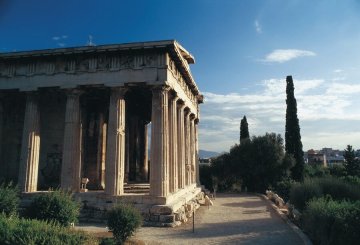
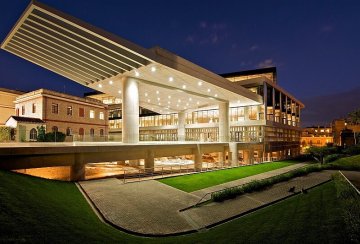
The Acropolis Museum is focused on the findings of the archaeological site of the Acropolis of Athens. The museum was built to house every artifact found on the rock and on its feet, from the Greek Bronze Age to Roman and Byzantine Greece. It also lies on the archaeological site of Makrygianni and the ruins of a part Roman and early Byzantine Athens.
The National Archaeological Museum is the largest museum in Greece and one of the world's great museums. Its abundant collections, with more than 20,000 exhibits, provide a panorama of Greek civilization from the beginnings of Prehistory to Late Antiquity. It welcomes thousands of visitors each year. Besides displaying its own treasures, it organizes temporary exhibitions and lends artefacts to exhibitions both in Greece and abroad.
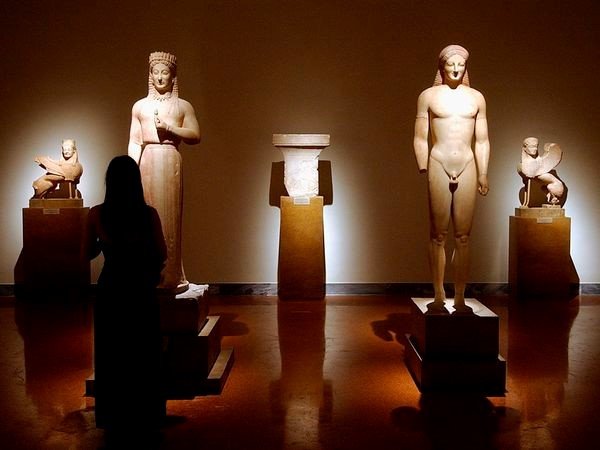
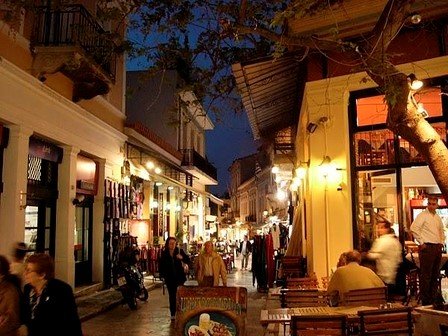
Plaka is the old historical neighborhood of Athens, clustered around the northern and eastern slopes of the Acropolis, incorporating labyrinthine streets and neoclassical architecture. Plaka is built on top of the residential areas of the ancient town of Athens. It is known as the "Neighborhood of the Gods" due to its proximity to the Acropolis and its many archaeological sites.
The Odeon of Herodes Atticus is a stone theatre structure located on the southwest slope of the Acropolis of Athens. It was built in 161 AD by the Athenian magnate Herodes Atticus in memory of his wife, Aspasia Annia Regilla. It was used as a venue for music concerts with a capacity of 5,000. It lasted intact until it was destroyed and turned into a ruin. Today the theatre opens during the summer for concerts and performances.
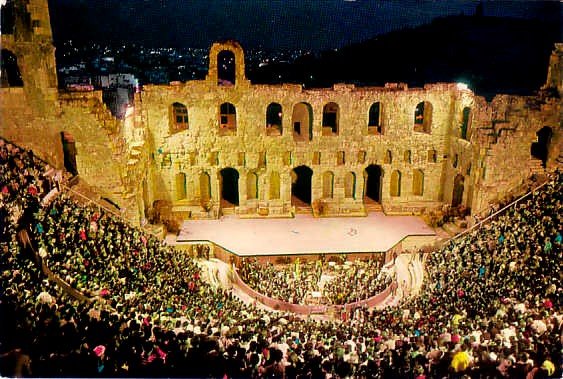
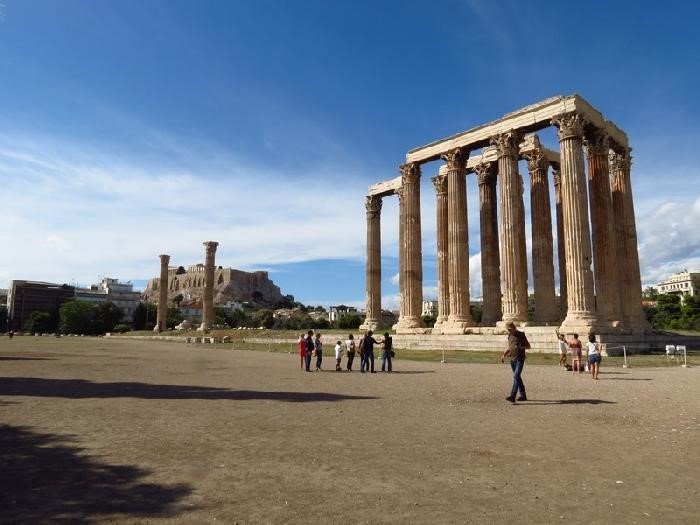
The Temple of Olympian Zeus also known as the Olympieion or Columns of the Olympian Zeus, is a colossal ruined temple in the centre of the Greek capital Athens that was dedicated to Zeus, king of the Olympian gods. Construction began in the 6th century BC during the rule of the Athenian tyrants, who envisaged building the greatest temple in the ancient world, but it was not completed until the reign of the Roman Emperor Hadrian in the 2nd century AD some 638 years after the project had begun. Fifteen columns remain standing today and a sixteenth column lies on the ground where it fell during a storm in 1852.
Cape Sounion, the sacred point of the Ancient Greece is a promontory located 69 kilometres south-southeast of Athens, at the southernmost tip of the Attica peninsula in Greece. Cape Sounion is noted as the site of ruins of an ancient Greek Temple of Poseidon, the god of the sea in classical mythology. Also famous for its beautiful sunset and the great views to the Aegean Sea. Try also to find the spot where Aegeus, king of Athens, leapt to his death off the cliff, thus giving his name to the Aegean Sea.
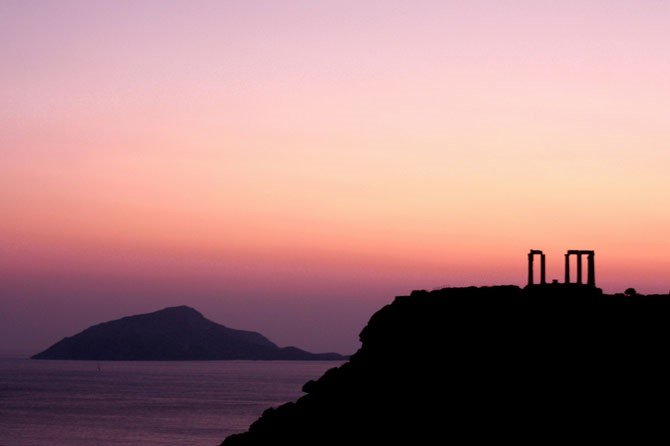
Copyright © 2017 Amoratis Travel.com. All rights reserved.
Last updated